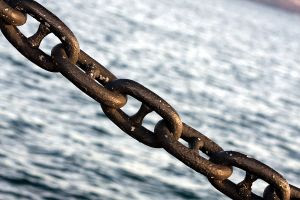Break the Chain
Break the Chain
This is a summary of BreakTheChain.org.
Experienced internet and e-mail users can easily recognize a new user: they forward an inbox-ful of email chain messages, urban legends, feel-goods, and end-of-the-world alarms.
I usually forgive a new user - for a few weeks anyway - but I don't have too much patience with emails that are obviously rehashed versions of decade-old chain letters and alarmist screams for attention, forwarded by friends who should know better.
E-mail is wonderful for immediate, personal communication between individuals. It is extremely poor for accurate mass-mailing.
Forwarded messages are particularly vulnerable to abuse. Internet users should ALWAYS carefully consider whether to forward a message, whether to one person or to an entire group. USUALLY, the forwarded message has been corrupted or blatantly perverted by multiple senders before you've received your copy of it. By sending it on, you are endorsing and recommending the message and the messenger, with little justification or validity behind it.
Here are four sites that you can easily use to verify a suspect email:
- http://www.snopes.com/
- http://urbanlegends.about.com/
- http://www.breakthechain.org/
- http://www.truthorfiction.com/
These sites have at least ten years of experience in tracking down hoaxes, chain letters, and urban legends. They can be trusted to give the straight scoop.
Do internet and e-mail users have a responsibility to verify messages before forwarding them?
YES!
It's an abuse of e-mail systems, a deceptive habit, and a perversion of communication to simply pass on false information under the blanket attitude of "It can't hurt, and it might help!"
An excellent resource for the proper, honest, responsible use of e-mail can be found at BreakTheChain.org: http://www.breakthechain.org/about.html.
John R. Ratliff created BreakTheChain.org in 1999. His mission is to educate people about the shortcomings of e-mail as a means of distributing information to the masses.
Ratliff has nearly 20 years experience with computers and the internet: researcher, editor and web designer. A degree in industrial/organizational psychology, and more than ten years of communications and public relations experience give him a expert status in print, radio, and television programs throughout the world.
BreakTheChain.org adheres to four basic principles:
1. E-mail was designed for person-to-person communication.
2. People act differently online than in real life.
3. E-mail poses significant privacy and security risks.
4. Both sender and recipient have a responsibility to check facts before passing them on.
What is a Chain Letter?
A chain letter is any message sent by e-mail or posted on chat rooms or bulletin boards that encourages the recipient to forward it to others. This includes:
- Virus warnings
- Missing or sick child alerts
- Jokes
- Good or bad luck wishes
- Get-rich quick schemes
- Editorials
- Health advisories.
What does "break the chain" mean?
"Break the chain" means to consider the limitations and implications of using e-mail to broadcast a chain letter.
Ratliff does not suggest automatically deleting a chain letter or stopping its spread. Rather, he recommends that you ask yourself if there is a better way to distribute the information, or a better source for it.
E-mail is not reliable: it rarely remains true and faithful to the original as it circulates.
E-mail is not valid: the source of the information is often lost (or concealed), and the sender of the e-mail is easily made anonymous or falsely named.
There are far better ways for broadcasing information to a large audience.
Forward with care, and only if you can personally vouch for the facts you send.



Comments
Post a Comment